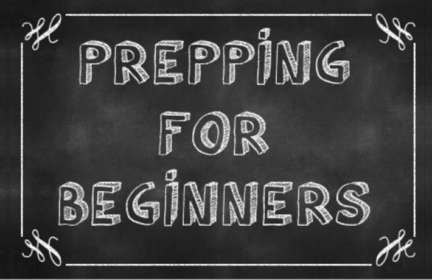Food storage/self reliance
I applaud that you are advising (like the Red Cross) to have 2 weeks of shelf-stable food stored, however, it’s rare that disasters occur singly. There are always cascading effects. FEMA, quite quietly, advised a few years ago not to expect them to show up for a week (previously it was 3 days and that’s after state governor declares disaster). So a scenario might be that a disaster happens, then you have to self quarantine for 2 weeks. Or you lose a job and it takes a month or more to find a replacement. Professional searches have been known to go for months.
So building your storage can and probably should be gradual, buying what you eat and eating what you buy.
At the other end of the continuum are the Mormons (LDS church) who take it as part of their faith to prepare to survive for a year (or more) on stored items and have tools to plant during that year for the longer haul.
I’d say 1 weeks worth of self reliance is a good start, but then extend the goal to a minimum of 3 weeks if you have the storage capacity. Shelter in place is often the best strategy for many disaster scenarios.
-
Best Replies
RedneckContributor Redneck - April 16, 2022
IMO, the trick to storing enough survival food to last extended periods, and do it without breaking the bank, is to put it up yourself. You can easily find plastic pails, Mylar bags & desiccants online. Then you just purchase bulk dried food from something like Walmart or Costco, and seal it up.
Here are some basic costs, even in todays crazy pricing.
5 gallon pail & lid from Walmart: $11
5 gallon Mylar bag from Amazon: $2
50 gram desiccant pack from Amazon: $1
40 pounds of long grain rice from Walmart: $16 .39/lb
Total that up, and you can put 40 lbs of rice in long term storage, 25+ years, for $30. That 40 pounds of rice provides 64,000 calories. At 2000 calories per day, that one $30 bucket could feed a person for 32 days.
You can get dried beans for .86/lb. 40 pounds of beans costs $32. Store it like above and the cost would be $62 for around 30,000 calories.
There are all sorts of ways to seal the Mylar, and you can search online for that. Since I use one each year and put up many such pails, I went ahead & got a nice unit that runs around $100 today. That might sound expensive, but if you put up lots of pails, it makes sense.
Rice and beans can be the foundation for long term food storage for survival. It is easy to add other items, such as dried pasta, wheat berries & rolled oats. If you purchase this food already packaged for you, it is much more expensive… if you can find it at all. Take rice for example. I see where Augason Farms charges $64 for their 24 pound pail of long grain rice. Do it yourself, and you can put up 40 pounds for $30. See the difference?
You will find that for around 1-2$ per pound, you can put up your own long term food stores. Just do this once or twice a year, and soon you too will be a crazy prepper that stores a year’s worth of food. My greatest quantity store by far, is wheat berries. They will store 25+ years and are easily ground into wheat flour. I eat wheat flour food items much more often than beans & rice, so therefore, I store more wheat berries.
-
Comments (8)
-
Forager - March 14, 2022
I think the two week standard recommendation is meant as a starting point, rather than an end point. It’s a reasonable goal most people can achieve fairly quickly, so those new to prepping don’t get intimidated into inaction. More is always better if you can afford it, have the space, and can use and rotate within a reasonable amount of time.
No matter what number of days/weeks/months/years we pick, it’s always going to be somewhat arbitrary, really. My group has gone with four months – enough to make it through the harshest part of winter without resupplying – because getting seriously snowed in by an early season blizzard is our greatest risk here, but even that is arbitrary in a way. I can certainly imagine disasters that could last much longer, but stockpiling for them would mean having more food than we can easily rotate out in a timely manner, so it’s all a balancing act.
I know your suggestion was a very reasonable three weeks, not years worth, but my point is just that ANY number is essentially arbitrary because we don’t know what’s coming or how long it’s going to last. So it really comes down to what each household can easily manage, with even the smallest goal, like 72 hours worth, being better than nothing for a beginner.
-
Bradical - March 14, 2022
Two weeks will make you more prepared than most people and let you get through most emergencies. There are exceptions like the job loss that takes a month or two to get a new job, but for the occasional power outage, snow storm, or even tornado with rescue inbound, the two weeks is something easily attainable for most, not too overly expensive (quickly changing unfortunately), and gives you a good start. 3-4 weeks (a month) is even better and will cover even more emergencies.
-
Dave - April 15, 2022
I am new in prepping and I started to organize our family storage not so long ago, but almost everyday I do something there and bring there food supplies. I guess I am already prepared for 2 weeks self-reliance, but my wife says that it is not enough, that we need more…
-
Bradical - April 15, 2022
Two weeks is more self-reliance and food storage than a majority of people have. But the more you can have, like your wife says, then the even more prepared you will be. Keep up the great work and do what you have been doing of just a little bit each day and you’ll be there in no time.
A month is an incredible feat, 6 months is legendary, and those who have more than a year is just insane!
-
RedneckContributor - April 15, 2022
A month is an incredible feat, 6 months is legendary, and those who have more than a year is just insane!
I resemble that remark. 🙂 You ain’t the first person to call me insane.
-
sewknot - April 16, 2022
Wow Dave, your lucky that you are starting with 2 weeks on hand already.
Have you talked this through with your wife? More is always better but only if you can rotate through it in time.
I suggest you discuss it together and work out how much you are aiming to store what is a reasonable short term goal to aim for? 1 month? 3 months? You could always have a longer term goal that you can aim for without feeling you have to buy all at once! I would love to have 3-4 months but storage space is my issue!
Also go through what you have on hand and think about what meals you could prepare with it. How about if your electricity is off? Does that change your plan? Do you have alternative ways to cook the food?
-
-
RedneckContributor - April 16, 2022
IMO, the trick to storing enough survival food to last extended periods, and do it without breaking the bank, is to put it up yourself. You can easily find plastic pails, Mylar bags & desiccants online. Then you just purchase bulk dried food from something like Walmart or Costco, and seal it up.
Here are some basic costs, even in todays crazy pricing.
5 gallon pail & lid from Walmart: $11
5 gallon Mylar bag from Amazon: $2
50 gram desiccant pack from Amazon: $1
40 pounds of long grain rice from Walmart: $16 .39/lb
Total that up, and you can put 40 lbs of rice in long term storage, 25+ years, for $30. That 40 pounds of rice provides 64,000 calories. At 2000 calories per day, that one $30 bucket could feed a person for 32 days.
You can get dried beans for .86/lb. 40 pounds of beans costs $32. Store it like above and the cost would be $62 for around 30,000 calories.
There are all sorts of ways to seal the Mylar, and you can search online for that. Since I use one each year and put up many such pails, I went ahead & got a nice unit that runs around $100 today. That might sound expensive, but if you put up lots of pails, it makes sense.
Rice and beans can be the foundation for long term food storage for survival. It is easy to add other items, such as dried pasta, wheat berries & rolled oats. If you purchase this food already packaged for you, it is much more expensive… if you can find it at all. Take rice for example. I see where Augason Farms charges $64 for their 24 pound pail of long grain rice. Do it yourself, and you can put up 40 pounds for $30. See the difference?
You will find that for around 1-2$ per pound, you can put up your own long term food stores. Just do this once or twice a year, and soon you too will be a crazy prepper that stores a year’s worth of food. My greatest quantity store by far, is wheat berries. They will store 25+ years and are easily ground into wheat flour. I eat wheat flour food items much more often than beans & rice, so therefore, I store more wheat berries.
-
CR - April 17, 2022
Redneck, good tips! quick question: I get that you use desiccants in your humid climate, but do you add oxygen absorbers too? I have them in my Mylar lined buckets, but not desiccants since we’re not humid here.
Also for those that are just starting out, Mylar bags can be sealed with a normal clothing iron. I put a piece of strap iron or smooth scrap wood across the top of the filled bucket, then push out as much air from the Mylar as possible & seal by laying the top of the bag flat across the board & ironing it. YouTube has some videos on that technique. Gotta keep wrinkles out tho…here’s a link illustrating it…not me on video 😉
-
RedneckContributor - April 17, 2022
I use both & don’t know if one is better than the other. Generally for dried foods, I use oxygen absorbers & for garden seed I use desiccants. Sometimes, I’ve used both.
When sealing my Mylar, I always double seal them, just to be sure. The first is several inches from the top of the bag & the second is closer to the top.
-
-
- News for the week of 2025-09-01 - 5 days ago
- News for the week of 2025-08-25 - 2 weeks ago
- News for the week of 2025-08-18 - 3 weeks ago
- News for the week of 2025-08-04 - 1 month ago
- News for the week of 2025-07-28 - 1 month ago
This forum is heavily moderated to keep things valuable to as many people as possible. Full community policies are here. The basics:
- 1. Be nice to each other.
- 2. Stay focused on prepping.
- 3. Avoid politics, religion, and other arguments.
- 4. No unfounded conspiracies, fake news, etc.
- 5. Debate ideas, not people.



